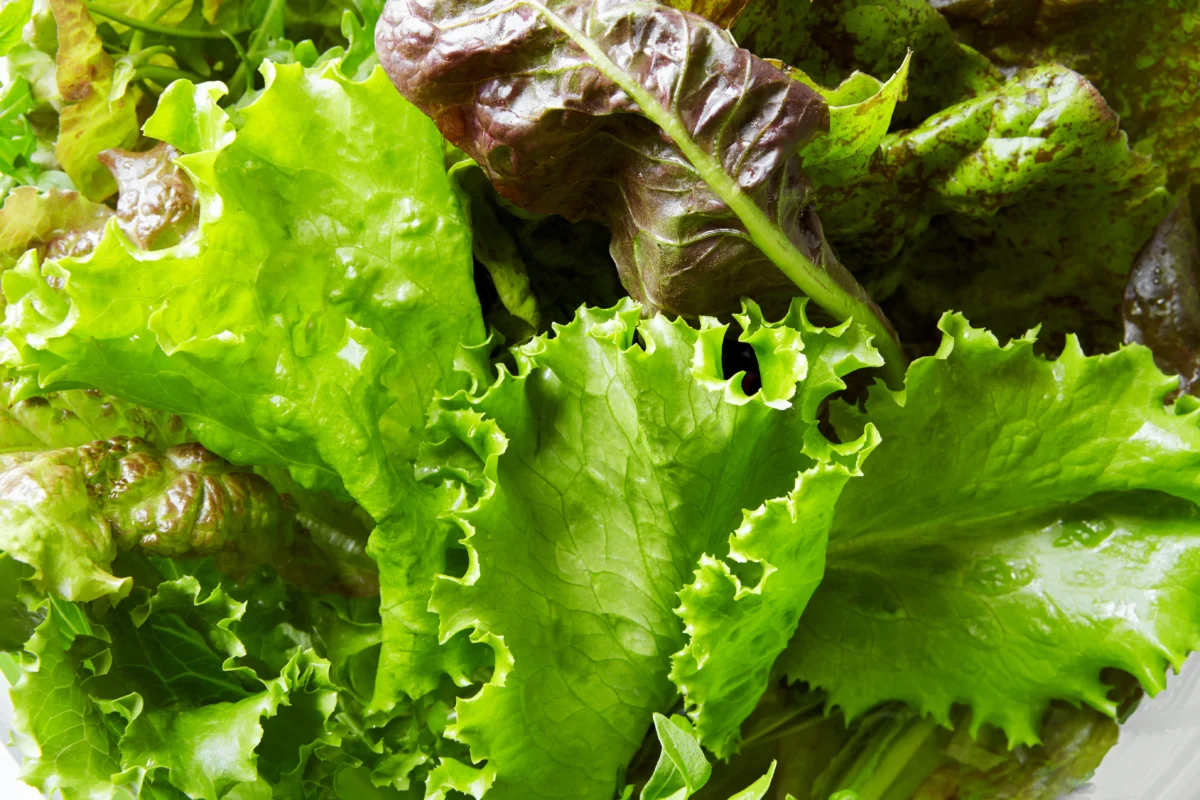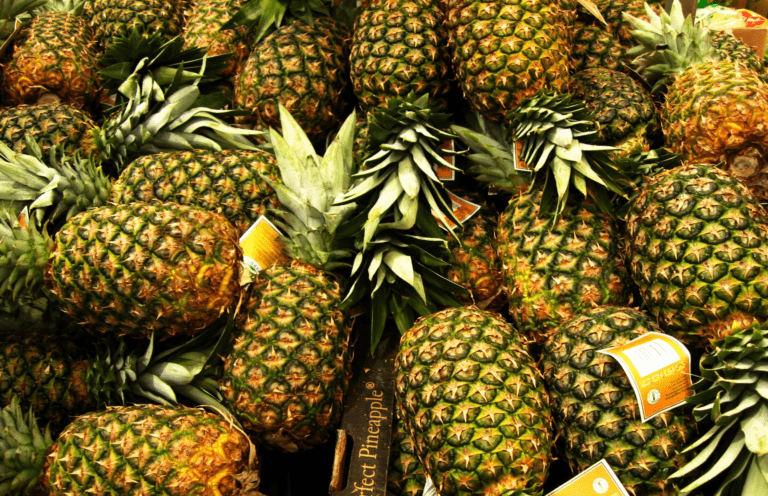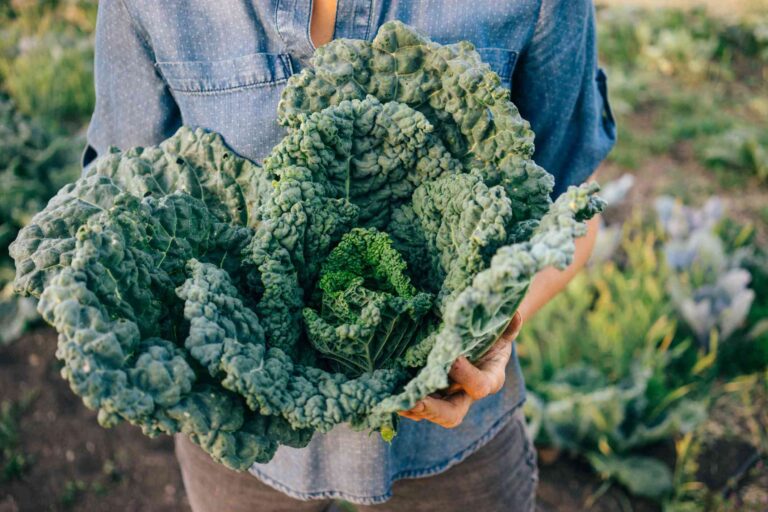How To Grow Lettuce For Great Harvests All Year Long
Understanding the different lettuce varieties suitable for year-round cultivation
Lettuce is a versatile and popular leafy green that can be cultivated year-round. Understanding the different lettuce varieties suitable for year-round cultivation is essential for gardeners and enthusiasts looking to enjoy a continuous supply of fresh and nutritious greens.
There are several types of lettuce varieties that thrive in different climates and seasons. For cool-season cultivation, crisphead lettuce varieties like ‘Iceberg’ and ‘Great Lakes’ are ideal choices. These varieties have compact heads and can tolerate colder temperatures. On the other hand, romaine lettuce varieties such as ‘Paris Island Cos’ and ‘Little Caesar’ are known for their upright, elongated heads and are also well-suited for cooler weather.
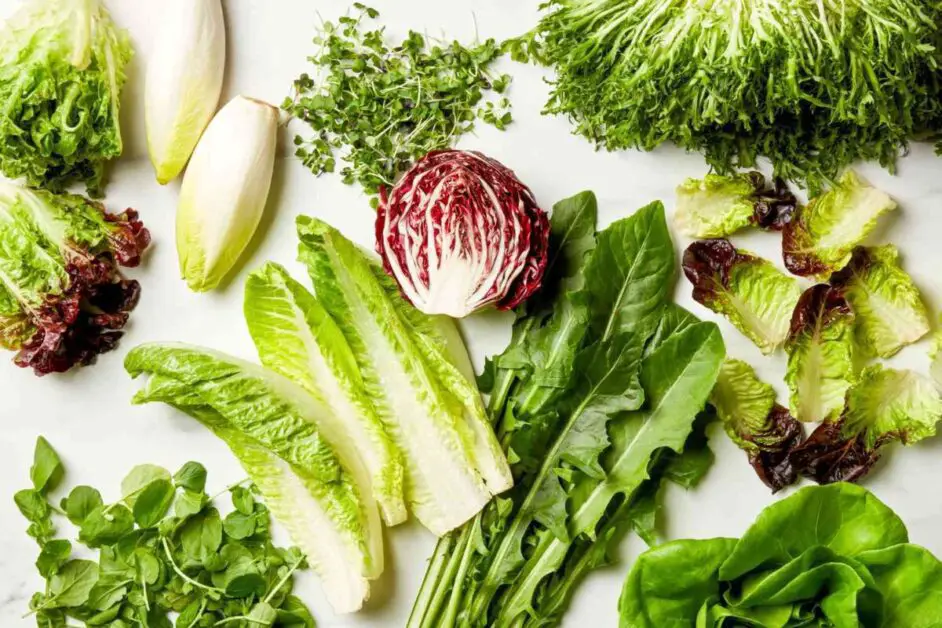
In warmer climates or during the summer months, loose-leaf lettuce varieties like ‘Red Sails’ and ‘Green Oakleaf’ are excellent options. These varieties do not form a tight head, allowing for continuous harvests of individual leaves. Another heat-tolerant lettuce variety is ‘Jericho’, which has a crisp texture and resists bolting, making it suitable for warmer climates.
By selecting the appropriate lettuce varieties based on the prevailing climate and season, gardeners can ensure a continuous supply of fresh and flavorful lettuce throughout the year, adding a delightful touch to their salads and dishes.
Selecting the right location and soil conditions for successful lettuce growth
When it comes to selecting the right location for successful lettuce growth, there are a few key factors to consider. First and foremost, lettuce requires ample sunlight to grow and thrive. It is important to choose a location that receives at least six hours of direct sunlight per day. This will ensure that the lettuce plants can photosynthesize and produce healthy foliage. Additionally, lettuce prefers cooler temperatures, so it is best to find a location that is sheltered from extreme heat or cold.
In terms of soil conditions, lettuce prefers a well-drained soil that is rich in organic matter. Sandy loam and loamy soils are ideal for lettuce cultivation, as they allow for good drainage while retaining enough moisture for the plants to access. It is important to avoid heavy clay soils, as they tend to become waterlogged and can lead to root rot. Conduct a soil test to determine the pH level of the soil and make necessary amendments to bring it within the optimal range of 6.0-7.0. Adding organic matter such as compost or well-rotted manure will also enhance the fertility of the soil and provide essential nutrients for healthy lettuce growth. By carefully selecting the right location and ensuring favorable soil conditions, you can set your lettuce plants up for success from the very beginning.
Preparing the soil and ensuring proper drainage for optimal lettuce growth
For optimal lettuce growth, preparing the soil and ensuring proper drainage are crucial steps that cannot be overlooked. Lettuce thrives in loose, well-draining soil that is rich in organic matter. Start by removing any weeds or debris from the planting area, ensuring a clean slate for your lettuce. Dig the soil to a depth of at least 12 inches, breaking up any compacted areas and allowing the roots to penetrate easily. Incorporating compost or well-rotted manure into the soil will enhance its fertility and improve its structure, providing a more favorable environment for lettuce growth.
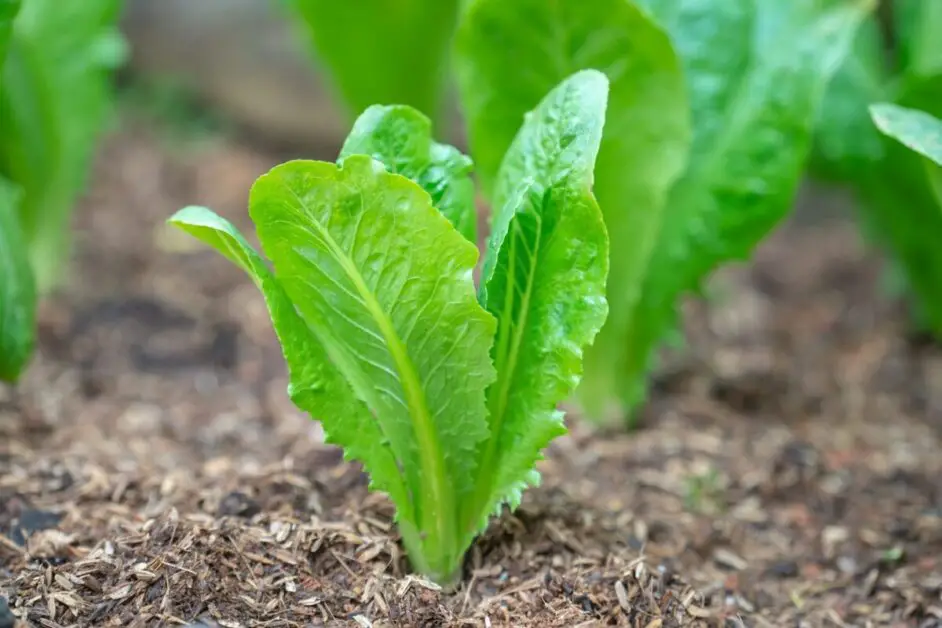
Drainage is another key factor in creating the ideal conditions for lettuce. Poorly drained soil can lead to waterlogged roots, causing them to rot and compromising the health of the plant. To ensure proper drainage, consider the natural slope of the land. If the area is flat or prone to waterlogging, creating raised beds or mounds can be effective in promoting drainage. Additionally, adding coarse materials like sand or gravel to the soil will enhance its drainage capabilities. Proper soil preparation and drainage are essential for optimal lettuce growth, setting the stage for healthy plants and bountiful harvests.
• Start by removing weeds and debris from the planting area
• Dig the soil to a depth of at least 12 inches to break up compacted areas
• Incorporate compost or well-rotted manure into the soil for enhanced fertility
• Ensure that the soil is loose and well-draining for optimal lettuce growth
• Consider creating raised beds or mounds in flat or waterlogged areas to promote drainage
• Add coarse materials like sand or gravel to improve soil drainage capabilities
• Proper soil preparation and drainage are essential for healthy lettuce plants and abundant harvests.
Sowing lettuce seeds or transplanting seedlings for the best results
When it comes to sowing lettuce seeds or transplanting seedlings, there are a few key considerations to keep in mind for the best results. Firstly, it is important to prepare the soil before planting. Lettuce prefers loose, well-draining soil to prevent waterlogging and root rot. Incorporating organic matter, such as compost, into the soil can improve its structure and fertility, providing the ideal conditions for lettuce growth.
Secondly, the timing of sowing or transplanting is crucial. Lettuce is a cool-season crop that thrives in temperatures between 45°F and 75°F. It is recommended to sow seeds or transplant seedlings in early spring or late summer for optimal growth. This allows the lettuce plants to establish themselves before the extreme heat of summer or the frost of winter sets in. Additionally, choosing the right lettuce variety suited to your specific climate and growing season can greatly increase your chances of success.
Whether you choose to sow seeds directly into the ground or transplant seedlings, it is important to provide proper care and attention throughout the process. Regular watering, allowing the soil to remain consistently moist but not waterlogged, is essential for healthy lettuce growth. Additionally, providing adequate sunlight or artificial lighting is crucial for photosynthesis and overall plant development.
In conclusion, sowing lettuce seeds or transplanting seedlings requires careful soil preparation, proper timing, and consistent care. By following these guidelines, you can set yourself up for success and enjoy a bountiful harvest of delicious lettuce all year round.
Stay tuned for the next section on providing the ideal temperature and light conditions for lettuce growth.
Providing the ideal temperature and light conditions for lettuce growth
To ensure optimal lettuce growth, it is crucial to provide the ideal temperature and light conditions. Lettuce thrives in cool weather and prefers temperatures that range between 45°F and 75°F (7°C and 24°C). Temperatures above 80°F (27°C) can cause the lettuce plant to bolt, leading to bitter-tasting leaves and an undesirable texture. On the other hand, temperatures below 40°F (4°C) can stunt growth and increase the risk of frost damage.
In terms of light, lettuce requires about 12 to 14 hours of sunlight or artificial light per day for proper growth. They are considered short-day plants, meaning they thrive with shorter periods of daylight. In low-light conditions, lettuce may struggle to grow and develop weak, leggy stems. To overcome this, gardeners can provide supplemental lighting using fluorescent or LED grow lights, ensuring a consistent light source that mimics natural sunlight. By maintaining the optimal temperature and light conditions, gardeners can foster healthy lettuce growth and improve overall yield.
The chart below shows the perfects temperature and light for lettuce grow all year long:
| Growth Aspect | Optimal Conditions | Adverse Conditions | Management Strategies |
|---|---|---|---|
| Temperature | – Ideal Range: 45°F to 75°F (7°C to 24°C) | – High Temperatures: Above 80°F (27°C) can lead to bolting, bitter taste, and undesirable texture. | – Monitor temperatures regularly. Provide shade or use row covers during hot periods. |
| – Low Temperatures: Below 40°F (4°C) can stunt growth and increase the risk of frost damage. | – Use mulch to retain soil warmth. Consider row covers or cloths to protect from frost. | ||
| Light | – Duration: 12 to 14 hours of sunlight or artificial light per day | – Insufficient Light: Can lead to weak, leggy stems and poor growth. | – Use supplemental lighting with fluorescent or LED grow lights in low-light conditions. Ensure consistent light exposure. |
Watering techniques and frequency to maintain proper moisture levels for lettuce
Proper watering techniques and frequency are crucial for maintaining optimal moisture levels for lettuce. Adequate moisture ensures that the plants receive the necessary nourishment for healthy growth and prevents issues such as wilted leaves or stunted development. However, overwatering can lead to root rot and other problems. So, how can you ensure that your lettuce receives just the right amount of water?
Firstly, it is important to note that lettuce prefers consistently moist soil, but not excessively wet conditions. This means that you should aim to water the plants deeply and evenly, allowing water to penetrate the soil to the depth of the roots. Shallow watering can result in shallow root growth, making the plants more susceptible to drought stress. To determine when it’s time to water, you can check the moisture level by inserting your finger into the soil. If it feels dry up to the first inch or two, it is time to water.
Fertilizing lettuce plants to promote healthy growth and high yields
When it comes to fertilizing lettuce plants, providing the right nutrients is crucial for promoting healthy growth and maximizing yields. The key is to strike a balance between providing adequate nourishment and avoiding nutrient overload.
Before fertilizing, it’s important to understand the nutrient requirements of lettuce. Lettuce is a leafy green vegetable that thrives on nitrogen-rich fertilizer. This essential nutrient plays a crucial role in promoting lush, green foliage and overall plant growth. However, excessive nitrogen can lead to excessive leaf growth at the expense of root development.
To achieve optimal results, it’s recommended to use a balanced fertilizer with a higher nitrogen content. Look for a formulation with a ratio such as 4-1-2, which indicates the percentage of nitrogen, phosphorus, and potassium respectively. This will ensure that your lettuce plants receive the nutrients they need without sacrificing the development of a strong root system.
When applying fertilizer, it’s important to follow the package instructions and guidelines. Over-fertilizing can lead to nutrient burn, stunted growth, and even plant death. Consider applying the fertilizer in a split dose, giving half the recommended amount initially and the remaining half a few weeks later. This approach provides a steady supply of nutrients throughout the growing season and helps prevent nutrient imbalances.
In addition to general fertilization, it’s also beneficial to incorporate organic matter into the soil. Compost, aged manure, and other organic materials not only provide essential nutrients but also improve soil structure and moisture retention. This enhances the overall health of the lettuce plants, resulting in healthier growth and higher yields.
By ensuring that your lettuce plants receive the right balance of nutrients, you can promote healthy growth and maximize your harvest. Keep in mind the specific nutrient requirements of lettuce, and don’t be afraid to experiment with different fertilizers and organic components to find the ideal combination for your growing conditions. Remember, a little goes a long way, so fertilize responsibly and enjoy the fruits, or rather, leaves, of your labor.
Implementing effective weed control strategies to prevent competition for nutrients
Weed control is an essential aspect of lettuce cultivation as it helps prevent competition for nutrients, ensuring the optimal growth of your lettuce plants. Weeds not only soak up valuable nutrients from the soil but also compete for space, light, and water, which can hinder the growth and development of your lettuce crop. Therefore, implementing effective weed control strategies is vital to maintain the health and productivity of your lettuce garden.
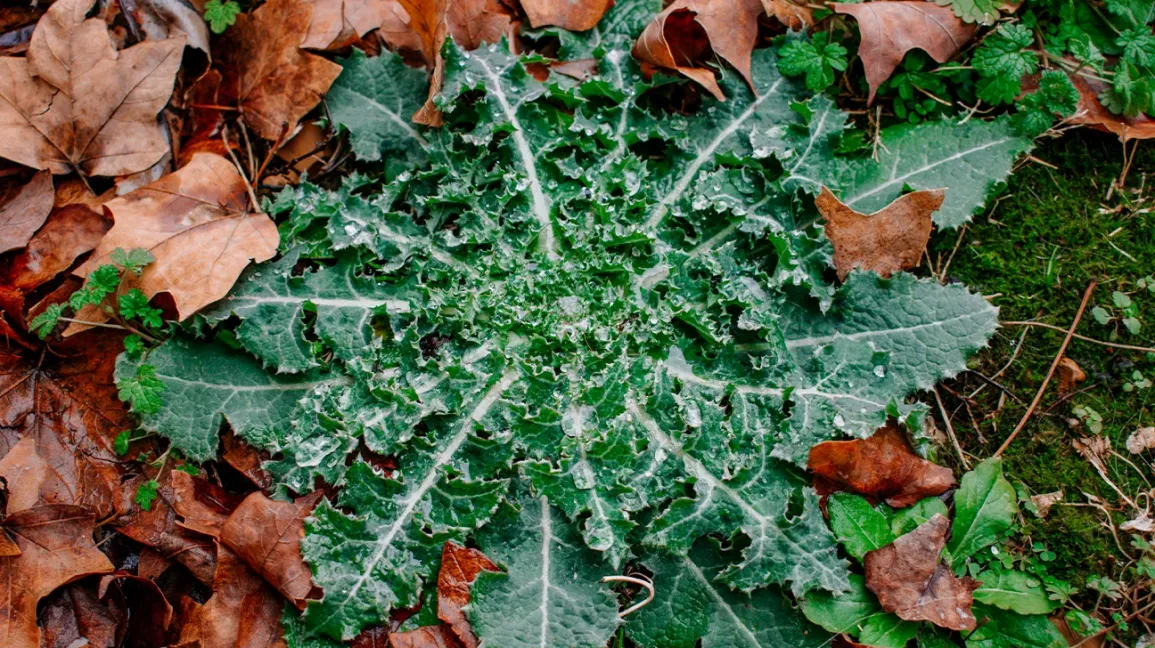
One of the most common and effective weed control methods is manual removal. By pulling weeds by hand or using gardening tools, you can target individual weeds, ensuring that they don’t take up valuable resources that your lettuce plants need. Remember to remove the entire weed, including its roots, to prevent regrowth. Regularly inspect your lettuce beds and remove any emerging weeds promptly to prevent them from spreading and causing further competition for nutrients. Additionally, applying a thick layer of organic mulch around your lettuce plants can help suppress weed growth by blocking sunlight, reducing the chances of weed seeds germinating. This natural weed control method not only helps prevent weed competition but also helps retain soil moisture and regulate temperature, further benefiting your lettuce crop.
Protecting lettuce crops from pests and diseases through preventive measures
Lettuce crops are highly susceptible to various pests and diseases, which can significantly affect their overall health and productivity. However, implementing preventive measures can help protect lettuce plants and ensure a successful harvest. Proper sanitation practices, such as regularly removing weeds, debris, and decaying plant material, can minimize the risk of pest and disease infestations. These cleaning efforts help eliminate potential hiding places and breeding grounds for destructive insects and pathogens. Additionally, practicing crop rotation can limit the build-up of specific pests and diseases, as different plant families have varying susceptibilities. By rotating lettuce with other non-host crops, gardeners can disrupt pest and pathogen lifecycles and reduce the likelihood of recurrence.
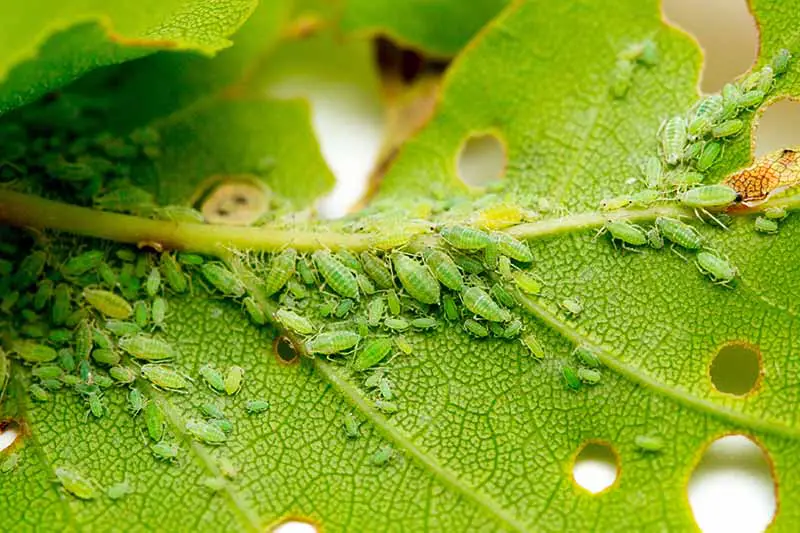
Another crucial preventive measure is the use of physical barriers, such as floating row covers or protective netting, to shield lettuce crops from invading pests. These covers act as a physical barrier, preventing insects like aphids, thrips, and beetles from reaching the plants and causing damage. Moreover, row covers also offer some protection against airborne diseases, including fungal infections, by reducing the exposure of lettuce leaves to infected spores. It is important to secure these covers tightly to prevent any pests from finding their way inside. While these barriers may slightly reduce light levels and airflow, they can be temporarily lifted or propped up during flowering or hot periods to ensure adequate pollination and ventilation. By implementing these preventive measures, gardening enthusiasts can effectively safeguard their lettuce crops and enjoy a bountiful harvest free from pest and disease-related issues.
The chart below shows the pests and diseases that can be seen in lettuce and their growth:
| Disease/Pest | Description | Preventive Measures |
|---|---|---|
| Bacterial Leaf Spot | Black lesions on mature lettuce leaves, often with yellow halos. Caused by bacteria from Xanthomonas and Pseudomonas genera. | – Use drip irrigation or water at ground level to prevent splashback. – Avoid overwatering. – Do not save seed from infected plants. – Sterilize seeds in a bleach solution. – Increase airflow and allow the garden bed to dry out. |
| Bottom Rot | Rotting of lettuce heads due to bacterial infection. | – Ensure proper drainage. – Avoid overwatering. – Rotate crops to prevent soil contamination. |
| Damping Off | Seedlings wilt and die at soil level. Caused by fungal pathogens. | – Use sterile soil and containers. – Avoid overcrowding seedlings. – Maintain good airflow. |
| Downy Mildew | Yellow patches on leaves with a downy growth on the undersides. Fungal disease. | – Plant resistant varieties. – Space plants for airflow. – Apply copper-based fungicides. |
| Lettuce Mosaic Virus | Mottled yellow-green leaves with distorted growth. Spread by aphids and other pests. | – Control aphids and other vectors. – Remove infected plants promptly. |
Understanding the importance of thinning lettuce plants for better overall growth
Thinning lettuce plants plays a critical role in promoting better overall growth and maximizing the yield of your lettuce crops. When lettuce plants are sown or transplanted, they often appear densely packed in rows or seed trays. Thinning is the process of removing some of these plants to create proper spacing between them, allowing each individual plant to receive the optimum amount of sunlight, nutrients, and water it needs to thrive.
By thinning lettuce plants, you enable them to develop strong root systems and access the necessary resources for healthy growth. Overcrowded plants compete for limited resources, such as sunlight and nutrients, leading to weaker plants that are more susceptible to diseases, pests, and environmental stressors. Thinning also helps to improve air circulation among the plants, preventing the buildup of moisture and reducing the risk of fungal diseases.
Proper spacing between lettuce plants allows them to receive adequate sunlight, which is essential for photosynthesis, the process through which plants convert sunlight into energy to fuel their growth. When lettuce plants are closely spaced, they may shade one another, limiting their access to sunlight and reducing their ability to produce energy. By thinning, you create an optimal environment for each plant to receive ample sunlight and increase its leaf production, leading to healthier and more vibrant lettuce leaves.
In conclusion, thinning lettuce plants is a crucial step in promoting better overall growth and yield. By creating sufficient spacing between plants, you enhance their access to vital resources like sunlight, nutrients, and air circulation. Thinning also helps reduce the risk of diseases and pests, ensuring healthier and more vigorous lettuce plants. We will delve further into the techniques and considerations for thinning lettuce plants in the following sections. Stay tuned!
Pruning and harvesting techniques for continuous lettuce production throughout the year
Pruning lettuce plants is an essential technique for promoting continuous production throughout the year. By removing old, yellowing leaves and any damaged or diseased foliage, you can help ensure that the plant allocates its energy towards new growth and the development of healthy, vibrant leaves. It is recommended to use sharp, clean shears or scissors to make clean cuts at the base of the leaves, taking care not to harm the central growth point known as the crown. Regular pruning also helps to prevent overcrowding and improves air circulation, reducing the risk of fungal diseases and promoting overall plant health.
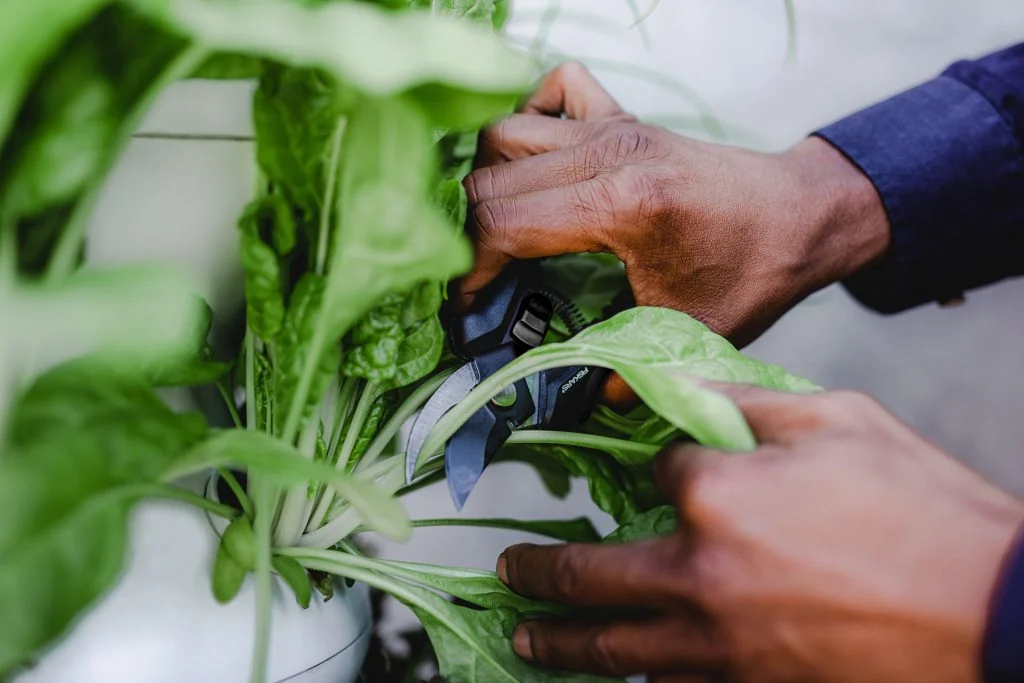
Harvesting lettuce at the right time and in the correct manner is crucial for maintaining a constant supply of fresh leaves. Depending on the lettuce variety, harvest time can range from 30 to 60 days after sowing or transplanting. One common method is to pick the outer leaves individually, allowing the inner leaves to continue growing. Alternatively, you can cut the entire plant at the base, about an inch above the soil level, to encourage regrowth for subsequent harvests. It is important to harvest lettuce in the cooler parts of the day, such as early morning or evening, to minimize wilting. Properly harvested lettuce can be stored in the refrigerator for up to a week, ensuring a continuous, fresh supply for your culinary needs.
Extending the lettuce growing season with the use of protective covers or structures
To extend the growing season of lettuce, using protective covers or structures can be highly beneficial. These methods provide extra protection from frost, cold temperatures, and other external factors that can hinder the growth and development of lettuce plants.
Using protective covers such as row covers or hoop houses can create a microclimate that shields the lettuce from harsh conditions. These structures trap heat, allowing the plants to thrive even in cooler seasons. The covers can be made of materials like polyethylene or fabric, which provide insulation while still allowing sunlight to reach the plants. By providing this layer of protection, the lettuce can continue to grow and produce even during periods when it would typically be challenging to do so.
Research has shown that using protective covers or structures can significantly increase the yield and quality of lettuce crops, as well as extend the harvesting season. For example, a study conducted by the University of Illinois found that lettuce grown under a floating row cover had increased yields and longer harvest periods compared to lettuce grown without any protective covering. The cover helped to maintain favorable temperature levels and protected the plants from pests and diseases, resulting in healthier and more productive lettuce crops.
In conclusion, the use of protective covers or structures is a valuable technique for extending the lettuce growing season. By implementing these methods, gardeners can provide the necessary protection for their lettuce plants, ensuring continuous growth and production throughout the year. Whether it’s a row cover or a hoop house, these structures offer a shield against unfavorable weather conditions, allowing gardeners to enjoy a bountiful harvest for an extended period.
Storing harvested lettuce properly to maintain freshness and quality
Proper storage is essential for maintaining the freshness and quality of harvested lettuce. After all the hard work put into growing healthy lettuce plants, it would be a shame to have them spoil due to improper storage. Lettuce is a delicate crop, and if not stored correctly, it can wilt, develop an unpleasant texture, and lose its nutritional value.
One important step in storing harvested lettuce is to remove any excess moisture. Excess moisture can lead to rotting and the growth of bacteria. Gently shake off any water droplets from the leaves before storing. Avoid washing the lettuce leaves before storage unless absolutely necessary. If washing is required, make sure to thoroughly dry the leaves before proceeding. Moisture can be a lettuce’s worst enemy, so it is crucial to keep it at bay during the storage process.
Additionally, it is advisable to store lettuce in a cool and humid environment. Ideal temperatures for lettuce storage range between 32°F (0°C) and 40°F (4°C). A refrigerator is the most suitable storage option for most home gardeners. However, it is important to note that lettuce is sensitive to freezing temperatures, which can cause damage to the leaves. To maintain the desired humidity, store lettuce in perforated plastic bags or place a damp paper towel in the storage container. This helps to create a slightly humid environment without causing excessive moisture buildup.
By following these storage guidelines, gardeners can enjoy the crispness and flavor of freshly harvested lettuce for an extended period. It’s worth investing the extra effort into proper storage, as it ensures that each bite of lettuce remains as delicious and nutritious as the day it was picked.
Watch the video to learn about lettuce growth all year long.
Succession planting methods to ensure a continuous supply of lettuce all year long
To ensure a continuous supply of lettuce all year long, using succession planting methods is essential. Succession planting involves staggering the planting of lettuce seeds or seedlings at regular intervals, allowing for a continuous harvest throughout the year.
One technique for succession planting is called “staggered planting.” This method involves planting a new crop of lettuce every few weeks, ensuring a continuous supply of fresh leaves. By planting a new batch of seeds or transplanting seedlings before the previous crop reaches maturity, you can enjoy a consistent harvest year-round.
Another effective method is “crop rotation.” This involves rotating the location of lettuce plantings within your garden or growing area. By moving the lettuce to a different spot each time, you can minimize the risk of pests and diseases building up in the soil. Crop rotation also helps to replenish the soil with nutrients and prevents depletion, leading to healthier and more productive lettuce plants.
By practicing succession planting and crop rotation, you can enjoy a steady supply of fresh lettuce leaves throughout the year. These methods ensure that your lettuce plants remain healthy and productive, allowing you to savor the taste of homegrown lettuce in your favorite salads, sandwiches, and wraps no matter the season.
Troubleshooting common lettuce cultivation challenges and finding solutions
One common challenge in lettuce cultivation is the occurrence of fungal diseases, such as powdery mildew and downy mildew. These diseases can easily spread in humid and crowded conditions, causing significant damage to the lettuce plants. To address this issue, it is important to practice proper spacing between plants to allow for good air circulation. Additionally, regular monitoring of the plants and prompt removal of any infected leaves or plants is crucial to prevent the spread of the disease. Applying organic fungicides, such as neem oil or potassium bicarbonate, can also help control fungal diseases and protect the lettuce crop.
Another challenge that gardeners may face is nutrient deficiencies in lettuce plants, which can result in stunted growth, yellowing leaves, and reduced yields. Proper soil preparation and regular soil testing are essential to ensure that the lettuce plants have access to the necessary nutrients. Adding organic matter, such as compost or well-rotted manure, can improve the soil structure and nutrient content. It is also important to provide a balanced fertilizer that contains adequate amounts of nitrogen, phosphorus, potassium, and micronutrients. Regularly monitoring the plants and addressing any nutrient deficiencies through targeted fertilization can help maintain healthy lettuce plants with optimal growth and productivity.
The chart below shows us the problems that can be faced while growing lettuce and their solution:
| Problem | Description | Solution |
|---|---|---|
| Bolting | Lettuce bolts to seed, producing a large flower head due to heat stress. | – Water the soil regularly around the base of the lettuce. – Provide shade, especially during hot parts of the day. |
| Germination Issues | Sometimes lettuce seeds fail to germinate. Optimal germination temperature is around 70°F, but it can vary by variety. | – Research varieties suitable for your climate. – Talk to neighbors about successful lettuce varieties. |
| Leggy Lettuce | Young lettuce with long stems and few leaves. | – If in pots, ensure sufficient light. – In the garden, provide shade if too hot. – Avoid planting in the same spot next season. |
| No Head Formation | Lettuce not forming heads as expected. | – Check soil fertility and nutrients. – Ensure consistent watering. – Monitor spacing and thin overcrowded plants. |
Tips for maximizing lettuce yields and enjoying a bountiful harvest all year long
Maximizing lettuce yields and enjoying a bountiful harvest all year long requires careful planning and implementation of key strategies. Here are some tips to help you achieve the best results:
1. Optimize growing conditions: Provide optimal temperature, light, and moisture levels for lettuce growth. Maintain a temperature range of 45-75°F (7-24°C), ensuring at least 12-16 hours of light per day. Use mulch to retain soil moisture and water regularly, aiming to keep the soil consistently moist but not waterlogged.
2. Choose the right lettuce varieties: Select varieties that are suitable for year-round cultivation in your region. Consider factors such as heat tolerance, disease resistance, and days to maturity. Popular options include Romaine, Butterhead, and Leaf lettuce varieties. Experiment with different varieties to find the ones that perform best in your specific conditions.
By implementing these tips, you can enhance your lettuce cultivation and ensure a steady supply of fresh, crisp lettuce throughout the year. Stay tuned for more expert advice on lettuce cultivation, as we delve deeper into various aspects of this versatile and nutritious crop.
What are the best lettuce varieties for year-round cultivation?
The best lettuce varieties for year-round cultivation include butterhead, romaine, and leaf lettuce. These varieties are known for their adaptability to different weather conditions and longer harvest periods.
How important is it to select the right location and soil conditions for lettuce growth?
Selecting the right location and soil conditions is crucial for successful lettuce growth. Lettuce prefers well-drained soil with a pH level between 6.0 and 7.0 and a location that receives at least six hours of sunlight each day.
What steps should be taken to prepare the soil for optimal lettuce growth?
To prepare the soil for optimal lettuce growth, it is important to remove any weeds or debris, loosen the soil with a garden fork, and incorporate organic matter such as compost or well-rotted manure to improve soil fertility and structure.
Can lettuce be grown from seeds or should seedlings be transplanted?
Lettuce can be grown from both seeds and seedlings. Starting with seeds allows for a wider variety of lettuce choices, while transplanting seedlings provides a head start in the growing process.
How can I provide the ideal temperature and light conditions for lettuce growth?
Lettuce thrives in cooler temperatures, ideally between 55°F and 70°F. To provide the ideal light conditions, ensure that lettuce receives at least six hours of direct sunlight each day or use artificial grow lights.
What is the best watering technique and frequency for lettuce plants?
Lettuce plants require consistent moisture to prevent wilting, but overwatering should be avoided to prevent root rot. Water lettuce deeply and evenly, aiming for about 1 inch of water per week, depending on weather conditions.
How often should lettuce be fertilized for healthy growth and high yields?
Lettuce plants should be fertilized every three to four weeks using a balanced fertilizer. Apply the fertilizer according to the package instructions, taking care not to over-fertilize, as this can lead to excessive leaf growth and a bitter taste.
What are effective weed control strategies for lettuce crops?
Effective weed control strategies for lettuce crops include mulching with organic materials, hand weeding, and using weed barriers or landscape fabric. Regularly inspecting and removing weeds helps prevent competition for nutrients.
How can I protect lettuce crops from pests and diseases?
Preventive measures such as practicing crop rotation, using row covers, and maintaining proper spacing between plants can help protect lettuce crops from pests and diseases. Regularly inspect the plants for signs of pests or diseases and take appropriate action if necessary.
Why is thinning lettuce plants important for overall growth?
Thinning lettuce plants is important because it allows the remaining plants to have enough space and resources to grow properly. Thinning helps avoid overcrowding, improves air circulation, and reduces the risk of diseases.
What are the recommended pruning and harvesting techniques for continuous lettuce production?
For continuous lettuce production, it is recommended to harvest outer leaves as needed while allowing the inner leaves to continue growing. Pruning can be done by cutting the outer leaves near the base of the plant, leaving the inner leaves intact.
How can I extend the lettuce growing season using protective covers or structures?
Using protective covers or structures such as cold frames or hoop houses can help extend the lettuce growing season. These structures provide insulation and protection from harsh weather conditions, allowing lettuce to be grown for longer periods.
What is the proper way to store harvested lettuce to maintain freshness and quality?
To store harvested lettuce, it is important to wash and dry the leaves thoroughly, then wrap them in a damp paper towel or store them in a perforated plastic bag in the refrigerator. Proper storage helps maintain freshness and crispness.
How can I ensure a continuous supply of lettuce all year long through succession planting?
Succession planting involves planting lettuce seeds or seedlings in intervals to ensure a continuous supply. Plant new lettuce every two to three weeks, staggering the planting dates, to avoid a harvest gap and have lettuce available all year long.
What are some common challenges in lettuce cultivation and how can they be resolved?
Common challenges in lettuce cultivation include bolting (flowering prematurely), pests, diseases, and nutrient deficiencies. These challenges can be resolved by providing adequate shade during hot weather, practicing preventive measures against pests and diseases, and regularly fertilizing to address nutrient deficiencies.
Are there any additional tips for maximizing lettuce yields and enjoying a bountiful harvest?
Yes, here are a few additional tips: regularly monitor soil moisture levels, provide adequate spacing between plants for proper air circulation, and rotate lettuce crops every year to prevent the buildup of pests and diseases in the soil.

